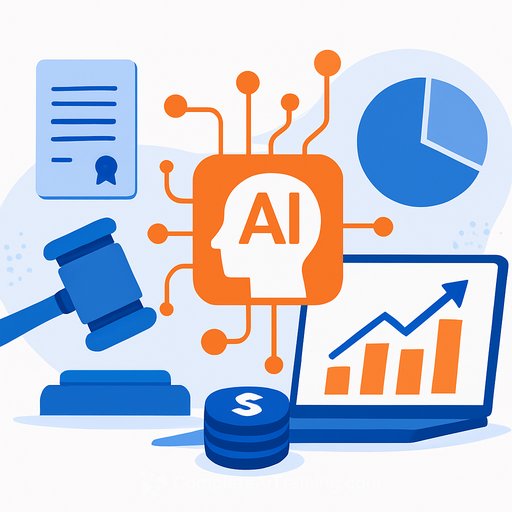EU signals AI Act slowdown amid US pressure: what legal, policy, and product leaders should do now
Europe is preparing to soften the near-term bite of its AI Act. A draft simplification package under discussion would delay parts of enforcement, add grace periods, and centralize oversight-after sustained pressure from Big Tech and the US government.
The package is expected to be tabled on November 19 and could still change. Any proposal would then need approval from a majority of EU countries and the European Parliament.
What could change
- One-year grace period for companies breaching rules on the highest-risk AI uses.
- Generative AI already on the market before the implementation date could get a one-year pause to adapt practices without market disruption.
- Fines for transparency violations delayed until August 2027 to give providers and deployers time to implement new disclosure obligations.
- Compliance made lighter and enforcement centralized through the EU's own AI office.
Why the rethink
Brussels has faced direct pressure from US officials and Big Tech. EU officials are weighing the risk of trade friction, impacts on intelligence cooperation, and knock-on effects for support to Ukraine.
Reportedly, the Commission has been engaging the Trump administration on adjustments to the AI Act and other digital rules as part of a wider simplification push.
What this means for you
Product and engineering leaders
- Use the grace period to close gaps, not to pause. Prioritize high-risk use cases first: safety, fundamental rights, critical infrastructure, employment, and essential services.
- Stage your roadmap: data governance, model evaluation, human oversight, logging, and incident response should ship in increments with clear owners and deadlines.
- For generative AI already in market, plan a 12-month remediation sprint: model cards, risk testing, red-teaming, user disclosures, opt-outs where required, and provenance where feasible.
- Build supplier controls: update contracts to require AI Act-aligned documentation, testing artifacts, and timely notices of model changes.
Legal, privacy, and compliance teams
- Map every AI system to a risk category and record legal bases, purpose, datasets, and mitigation measures. Keep a single source of truth.
- Draft a transparency plan now even if fines are delayed to August 2027. Anticipate content labeling, user disclosures, and data subject rights workflows.
- Prepare for centralized EU AI Office oversight: align internal reporting lines, assign accountability, and pre-draft templates for conformity assessments.
- Monitor national authority signals. Delays in fines do not block scrutiny, audits, or reputational fallout.
Public sector and procurement
- Update tenders to require AI Act readiness evidence: risk classifications, data provenance, evaluation reports, and human oversight procedures.
- Phase deployments with milestone-based compliance and independent testing before scale-up.
Timelines to watch
- Nov 19: Commission decision on the simplification package (subject to change during internal and capital-level discussions).
- Post-proposal: Approval by a majority of EU countries and the European Parliament required before changes take effect.
- Transparency fines: Proposed delay to August 2027 for enforcement of new transparency penalties.
Action plan (next 90-180 days)
- Run a portfolio-level AI risk inventory and tag systems by use case, users affected, and potential harms.
- Stand up a cross-functional AI compliance working group tied to product operations and incident response.
- Draft or update technical documentation and evaluation protocols for high-risk systems; schedule external audits where relevant.
- Ship user-facing transparency UX early: clear notices, consent where required, feedback channels, and accessible explanations.
- Set vendor SLAs for model updates, vulnerability reporting, and dataset changes.
Strategic takeaway
A softer runway does not change the destination. The direction is clear: higher scrutiny for high-risk use, enforceable transparency, and stronger oversight. Teams that build the muscle now will spend less time firefighting later.
Resources
Note: Details described above reflect a draft that could change before or after November 19 and will be subject to the EU's legislative approval process.
Your membership also unlocks:














